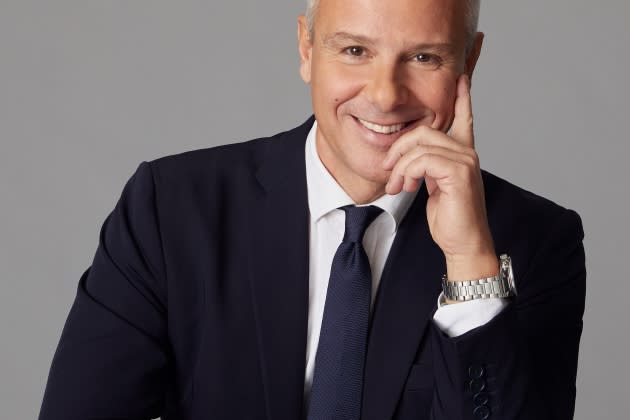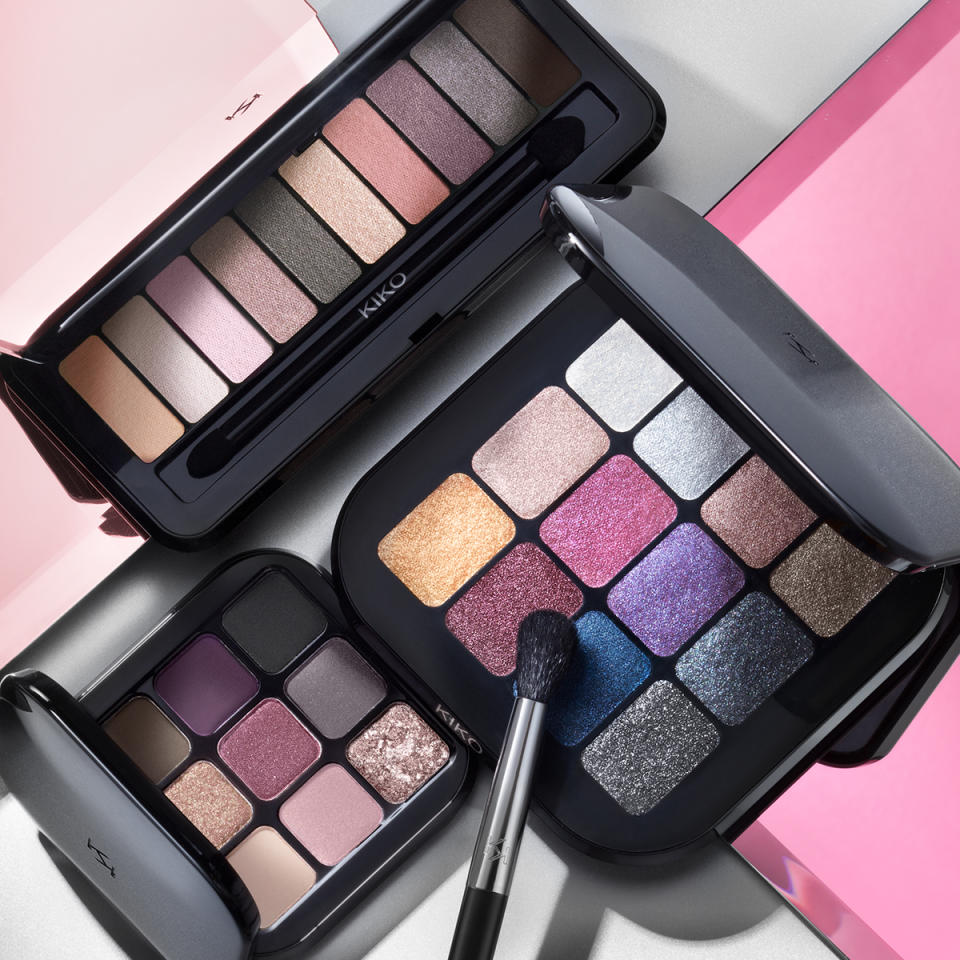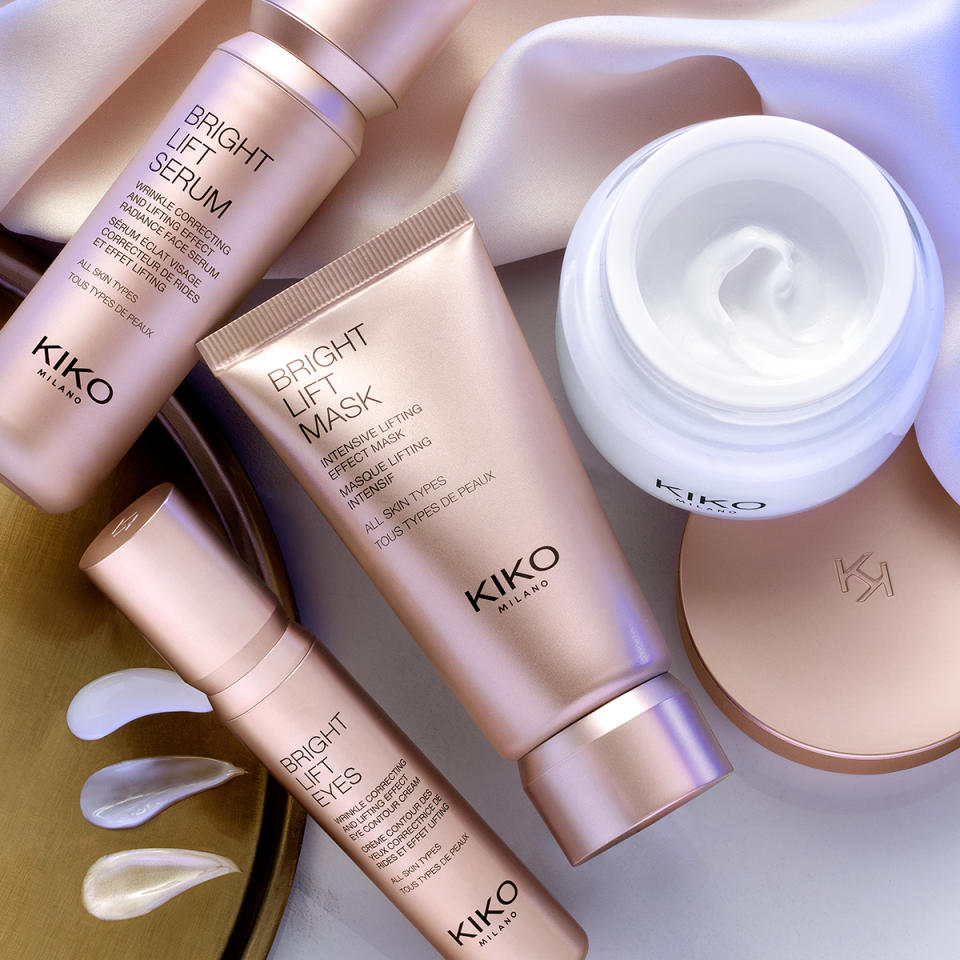Kiko Milano’s CEO on Pivoting a Makeup Chain Into a Global Beauty Brand

MILAN — Transformation is a recurrent word in the strategy Simone Dominici is implementing at Kiko Milano, the Italian cosmetics brand he was appointed to helm earlier this year.
Within eight months, the new chief executive officer — who succeeded Cristina Scocchia in the role and has had former experiences at Unilever, Coin, Bottega Veneta and, most recently, Coty Inc. — has injected a new dynamism into the company by shifting its paradigm across different axes, ranging from product assortment to distribution.
More from WWD
And Kiko Milano is starting to reap the first benefits of this strategy, with sales growing rapidly and expected to increase around 40 percent this year versus 2021, when they totaled 473.9 million euros, and to beat the results of its best year, in 2017, when the group generated sales of 610 million euros.
While physical distribution will include 72 new doors this year, online sales grew from making up 3 percent of total revenues in 2018 to 10 percent today. And Dominici believes they will generate 20 percent in a couple of years.
Therefore, the 1 billion-euro milestone in overall sales targeted for 2025 might be celebrated earlier than planned, the executive said. In light of all this, it’s no big surprise that Kiko Milano’s founding Percassi family bought back the 38 percent stake Peninsula Capital had held in the group, therefore regaining full control of the company it established in 1997.
Although the recipe for Kiko Milano’s strategic shift is made of different ingredients, they are all meant to feed into elevating the perception of Kiko Milano.
“The real transformation we wanted to do, and that we’re doing, is [moving] from being a regional chain of makeup stores into becoming a global beauty brand powered by a unified commerce model,” said Dominici, underscoring that such a shift requires “curating all aspects.”
First, he has homed in on product assortment by optimizing the catalogue to have the so-called “icons,” bestsellers and seasonal drops providing the newness and most innovative elements demanded by the market. “Everything which is in the middle, we had to keep it as slim as possible,” Dominici said. This change has enabled Kiko Milano to rationalize its offering and pricing, reduce stock and consequentially forgo discounting and promotions, while gaining in-store space for services.

Investments were poured into revamping physical units with a focus on sustainable features, from LED lighting to replacing plastic displays, as well as into communication, especially social media. Kiko Milano’s social media engagement has spiked on Instagram and TikTok as a result, with videos on those platforms growing their viewership from around a half-million in the past to many boasting 20 million to 25 million today. Such online buzz increases traffic in-store, with a knock-on effect on sales.
As Kiko Milano’s online sales continued to grow — especially in the U.S., thanks to the trifecta of Kiko Milano’s own e-commerce and presence on Ulta and Amazon’s digital platforms that generated a 40 percent increase in online sales in that market — the brand is also expanding its physical retail footprint. Next month, Kiko Milano will open its 1,000th store in Dubai, while other ribbons are to be cut in Jordan, the Philippines and Thailand, among other countries.
By the end of this year, the brand will have entered 10 new markets — one directly operated and the rest through franchise agreements — and a similar rhythm of openings will be replicated next year, teased Dominici. By end of 2022, Kiko Milano should be available in 44 countries, 19 of which will be directly operated.
“Before, there was a lot of focus on the east, but now we have opportunities in any region,” Dominici said. He noted: “Europe is back, in particular France, Italy and Spain,” and that the brand is reporting an outstanding performance in the Middle East.
As for the U.S., after filing for Chapter 11 there in 2018, Kiko Milano kept just two physical units in Miami, but with its online push the brand is “regaining some respect in the market, and that is leaving us room to be a little bit more optimist about the future strategy.”
As for the physical stores, the CEO stressed the importance of providing experiences and training beauty advisers to help customers not only in identifying the right products for them, but also by explaining their use, as cosmetics become increasingly sophisticated and multifunctional. In line with this, the company implemented “Makeup & Go,” free 10-minute beauty sessions covering six categories, such as brows or eye makeup. The move was beneficial, as “eventually your average ticket more than doubles,” Dominici said.
“Consumers today don’t want to be treated as followers any longer, they want to be involved even in the brand narrative. People are becoming savvier and savvier, the social networks are accelerating their understanding through tutorials. You need to provide [consumers] the opportunities to express their own individuality freely with a multitude of products,” the executive said.
Along with Kiko Milano’s motto “premium experience, accessible price,” he highlighted the social role the brand has in unlocking people’s potential, “igniting their confidence and enriching their lives.”
Dominici applies the same approach in leading his team, half of which has been revamped with new hires in key roles, such as human resources, chief transformation officer for the digital acceleration and head of global franchising. Last week, the company also tapped former Yves Rocher executive Candice Llorens as chief marketing officer, in a move that intends to further support the ambition of pivoting Kiko Milano from a makeup retailer to an overall beauty brand.
To this end, Dominici considers bolstering the brand’s skin care category, seen “not as a gap, but an opportunity for us.” Currently accounting for 10 percent of total Kiko Milano sales, skin care has the potential to double its share in the next couple of years.

Whereas before the pandemic, Dominici considered that Kiko Milano was “caught in the middle between the large multinationals with a lot of tools and the more exciting indie brands, but we were considered neither one or the other,” he now looks to flip the perception. “We have the opportunity to blend the two: to have the competencies of established brands with a know-how in beauty of 25 years [and an expertise in] supply chain, R&D and retail, and combine it with the excitement of indie brands,” he said.
The pandemic has propelled this new direction. “In Formula One, when an accident occurs, the safety car enters and the distance among the different racers shortens. Then, it’s important to be the fastest one when re-accelerating,” Dominici said drawing a parallel with the COVID-19 pandemic. “We were much behind the competition before…but saw an opportunity to restart.”
Asked about the F1 team he identifies Kiko Milano with most, the CEO said: “We are the outsiders. The leaders are seeing us from the mirror accelerating more than them, and I think they’re starting to look at us [in a different way].”
Best of WWD

